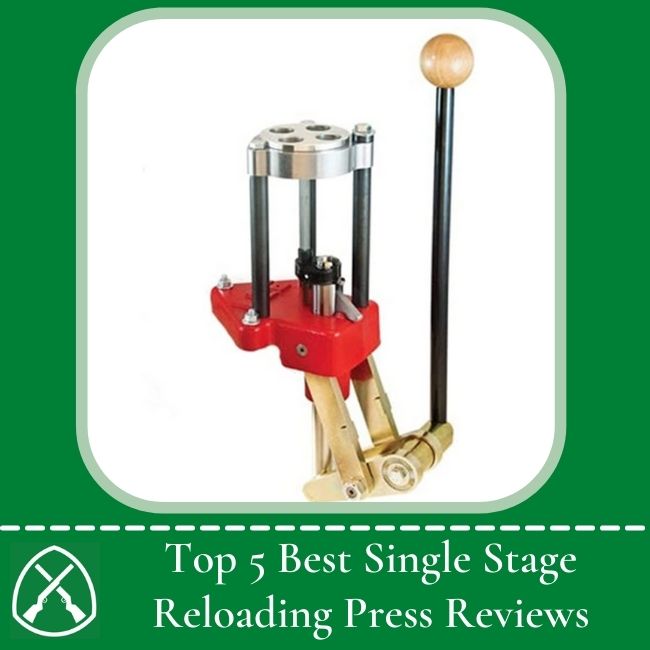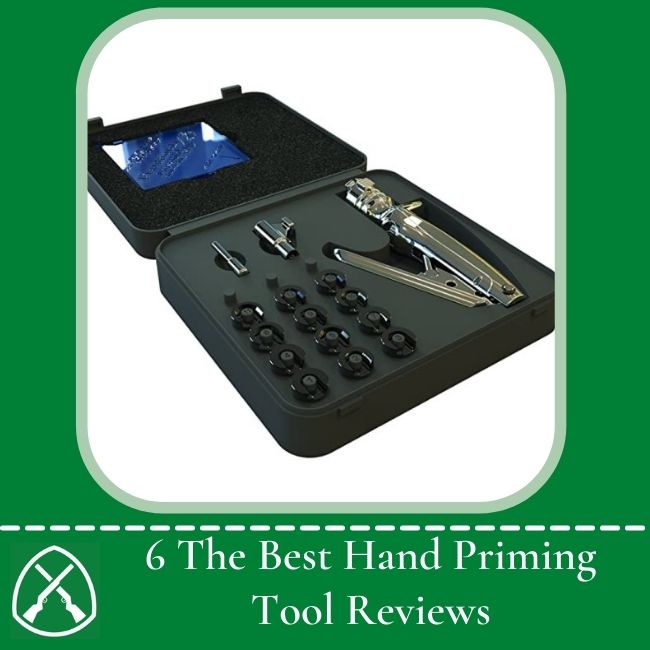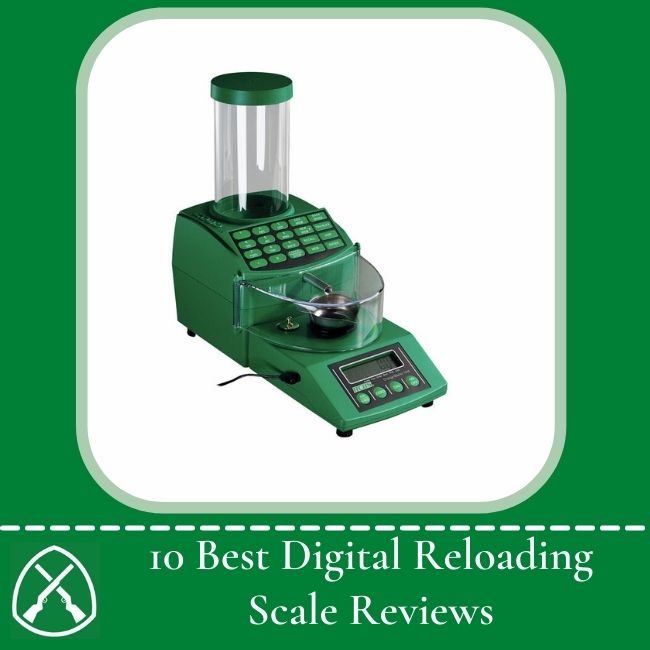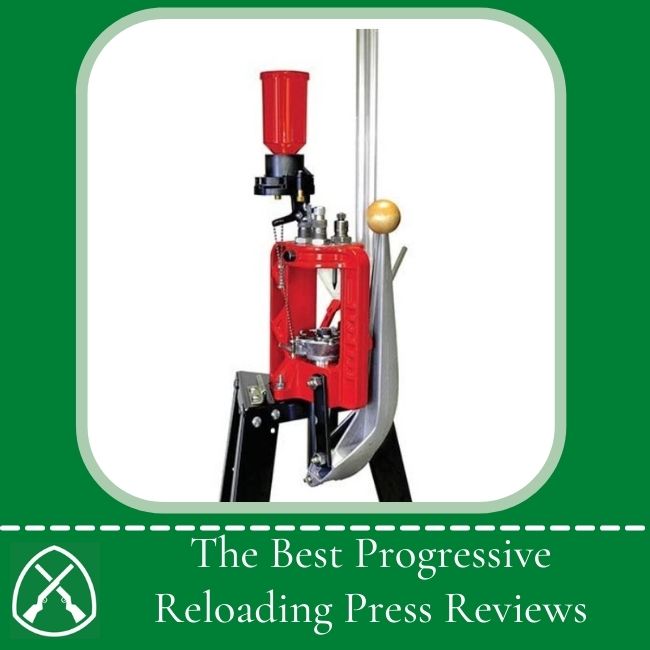As you are about to dive into the world of reloading, it’s pretty easy to be overwhelmed with information. You might be one of those people who just want to be extra careful to not make too many beginner common reloading mistakes. Reloading is one of those activities that you want to be extra careful about because a small mistake can lead to unwanted small explosions, cracked brass, etc.
In this article, we are listing down the common reloading mistakes people make, even the ones who’ve been doing it for quite a while.
11 Most Common Reloading Mistakes You Should Avoid
Chipped or Cracked Brass
This is the first of common reloading mistakes, or more like an issue, that beginners will meet. Not every one-time shot brass will turn up as nice as they were new. It’s a fact that while many of the cartridges may look fine and will shine after a few rounds in the tumbler, they crack from falling out of the gun. It could also be your common mistake from processing the brass.
Running around the tumbler with coarse medium or way overloaded with cartridges can cause them to scratch each other. And cracked brass will definitely cause your bullets to not be launched properly. Another cause could be over-crimping your bullet on the cartridge which leads to cracked end on the brass. Otherwise, it’ll create too much tension on the bullet, causing it unable to fly properly.
It’s important that aside from this, you make sure to check the condition of the shells that you are working with. Used brasses always need proper cleaning, trimming and checking so you only use proper cases.
Primer Seating
There’s a lot of floating opinions on how primers should be seated. Commercially made bullets have the primers seated slightly in, but home-reloaders believe the primer should be placed deeper to give it that extra push. That said, we recommend that if it’s your first time, go slow when you prime with a PPS system on your reloading press. Don’t push way too deep, just give it enough pressure and manually check your first few bullets to see if you’ve done it right.
A primer that is placed too deep may cause trouble to weapon cycling and even crack under the pressure. While primers that are not seated deep enough may cause unwanted ignition since even the smallest spark will set the powder inside to explode. Primers that are not seated deep enough can be adjusted easily with the press, but if it’s too deep, you have no other way but to deprime it again.
On the other hand, you can also go with hand primers and make sure the primers are flipped the right way before beginning. Then, you just need to manually take one cartridge after another to prime them.
Powder Charges Accuracy
It’s very easy to miss the ratio of your powder for your first few charges: too much powder or not enough is a usual mistake. Even professionals can sometimes encounter problems with getting their wrong powder charges accurate. It’s very important that you weigh every few bullets to see if your powder measure is giving the right charges every now and then. It’s also important to set your own accuracy margin realistically.
There are several ways to check. First is to do a visual check, which is easier to be done on each of them. Next is to weigh every few rounds to make sure your powder charge is still releasing the same amount. Be sure that you use a reliable, accurate scale for this. Do your scaling on a flat, firm and solid ground to gain the best reading.
A manual scale will definitely get a more accurate reading, but it’ll take some time to get it right. While a digital scale my skew if interference is present.
Bullet Seating
Another important thing that beginners make mistakes is about wrong bullets seated. First is the position of the bullet which comes first before the crimping. It’s easy to mistakenly put the rifle bullets way too deep or the opposite, so learn to feel and visually check your bullets. Bullets should not be seated too far or too deep.
After that is the crimping which should not be done simply ‘tightly’. You should not crimp the sides way too tightly on the bullet or too loose. Both will pose a problem in the projectile of the bullet such as bullet not reaching its target or recoiling from the impact of tight crimping.
Not Sure What’s In That Case?
Sometimes, you might encounter a bunch of unused charged shells with bullets still intact. It seems that a bit of polishing is all you need, but stop right there. You best properly discharge those bullets and empty it. Then send it to clean in the tumbler and prep it again. This is because if you are not sure what is in there or how long it’s been sitting in your attic, the inside might be contaminated, it might have been charged for a special gun, etc.
Make sure to dispose of the powder in a safe place, say, your garden because they are good fertilizers (if not set on fire). Do read up on how to dispose of black wrong powder, though. Deprime the bullet, clean the inside, trim and prepare the case and turn it into brand-new-looking shells.
Where Do You Work?
Not just any basement can be turned into a working space for reloaders. It’s very important to heed to the warning and standard of space for reloading. For example, it has to be an enclosed area where win won’t possibly be blowing your scale or powder around. It has to be well-lit with enough space to lay your reloading manual book on.
Make sure it’s not too damp that it’ll turn powder into waste during springtime or dry that it might risk sparks and explosions during summer or winter.
Projectile Seating
When you put the bullet in, it’s possible to either have too far or not enough seating and this could damage your weapon’s action or barrel! To avoid this try making sure that when loading ammunition for a firearm its using exactly as much of each individual cartridge by following these steps: place both ends into their respective chambers until resistance becomes felt while gently pressing down on top side with thumb so they snap tightly together without forcing any extra air out through holes at bottom edge; then force one end downward slightly tighter against base plate(this should seat projectile). After doing all three prior tasks make certain every chamber has same amount
Before you start, make sure that there is adequate ventilation and the area around your workstation isn’t too cluttered. You should also wear protective gear such as gloves to avoid getting hurt in case something goes wrong! Follow all safety instructions when doing so; if they say don’t do this then forget about it – these people know what they’re talking about! Have someone watch over kids while reloading since children can get into very dangerous situations without supervision from an adult nearby.”
Crimping Mistakes
When it comes to the last common mistake on our list, either we’re too much in love with that intoxicating feeling of crimped casings or not enough and as a result; they can cause issues cycling weapons . They create bulges which may hang up when trying enter chamber depending upon how deep you’ve gone with your job!
If you don’t thoroughly inspect your ammunition after it has been crimped, then the projectile could come out a little bit which would cause issues with loading and cycling. To avoid this problem make sure that when doing so there is an inspection process to check for any common reloading mistakes or flaws in design before putting anything into service!
Poor Casing
Poor casing is one of the most common culprits behind reloading gone wrong. Recycling your casings after they have done shooting can be an economical choice for many, but this may lead to you having poor quality bottlenecked rifle cases or ones that don’t fit properly in some guns (especially if not sized correctly). If any part these three things happen- avoid using them and try again!
If your casing has a crack or dent, it can allow gases to escape from the cartridge easily. This in turn creates huge potential for you—the shooter–to be harmed because if these escaped gasses hit something hard and break open at least partially, then they might cause more damage than good! The worst-case scenario would have this happen all the way up until one side splits completely off into two pieces before eventually falling back down onto its original position again (which could potentially jam things up).
So, poor gun performance and safety hazards can be attributed to poor casing. The best way is obviously just double-check each one for you before using them! And if that’s not enough to scare any potential reloaders away then I don’t know what will!
Using Too Much Sizing Lube
Output: Too much sizing lube is a common cause forissues. Most commonly, you can end up with divots in your brass bottlenecked rifle cases and an excessive amount of spray coming out when applying it to the case mouth or even worse-a big globbing at one point on top where there should never be any condensation like this! It also problematic if applied too quickly because all pressure will build inside causing dents which tend not only make shooting less enjoyable but may also result from over expanding during expansion due to high heat created by rapidly shrinking gun barrel length while firing rounds.
The effect this has is reducing case capacity. You might have to deal with cracking, and of course there’s always the chance that your gun will become fatigued from overusing it too much. So how should you avoid these issues? It’s simple enough: just use less lube! Sure, they can make life easier in those moments when we need them most- however using too much often leads us down an unhappy path where our firearm ends up having problems later on due its inability (or unwillingness) to properly function as a result from improper maintenance techniques like shooting while wet or rechambering rounds after each shot fired out of fear if jamming occurrs.
When case mouths shave bullets
When a firearm is fired, the cartridge case rim slides over the mouth of an unfired bullet. Cartridge case mouths cause Precision problems because it interferes with seating bullets properly into their chamber and holding them snugly by friction alone.
Final Words
You can save money by reloading your own bullets, but it’s important to note the most common reloading mistakes or common errors that occur during this process and how you might avoid them. For example: use only new components when making cartridges; never reuse old cases (they may not damage a gun).
How would someone go about saving themselves some cash in regards too purchasing ready-made ammo? Well take into account all these tips on getting started with reloading!









When I started loading 45 years ago I was too poor to make many mistakes most of my equipment was free and second hand. I mostly loaded 38 special with a Lee Loader with a dipper and a hammer, cost me about $2.50 to load 50 wadcutter loads.
Another thing I have seen (up close) is some guy in Montana does his load development in early spring when it’s 50 degrees outside but then come July in Southeast Texas when it’s 98 degrees in the shade some guy copies the guy from Montana’s load data and wonders why it doesn’t work or why he’s popping primers. That extra heat outside can take a ‘hot load’ from hot to unsafe real quick. In other words DON’T use other people’s load data! And if you do WORK UP TO IT. If you see unsafe signs half way there, STOP.
Everything you said is spot on. Especially the freebore issue, and the (LOL) money saving part.
Yeah… I get asked about it being cheaper too… I mostly reload because I enjoy the process and find it to be a good way to de-stress from a long day or week. Plus my kids think it’s fun to help dad make bullets. If you were to calculate time and tools into the cost of making rounds it would almost be cheaper to buy a new gun for every round I shoot…
Thanks for the information and video. I have grew my selection of tools and equipment for reloading over the years. Started with a basic Lee turret set up. I didn’t have any way to clean my brass other than fine steel wool. It’s not cheap for sure.
I live in the People’s Republic of California…I know…I know…but living hear is the sole reason I got into reloading. I figured the politics would eventually get to the ammo, like it has with buying guns here, and it’s now looking this way for the whole country! Anyway that’s why I reload…to insure that I will always have a way to have ammunition when I need it. Love the channel! Please keep doing what you do! Thanks
A rifle cartridge case mouths is a common reloading mistake, too. I did it…
Nice article. And one about reloading dies is nice, too!